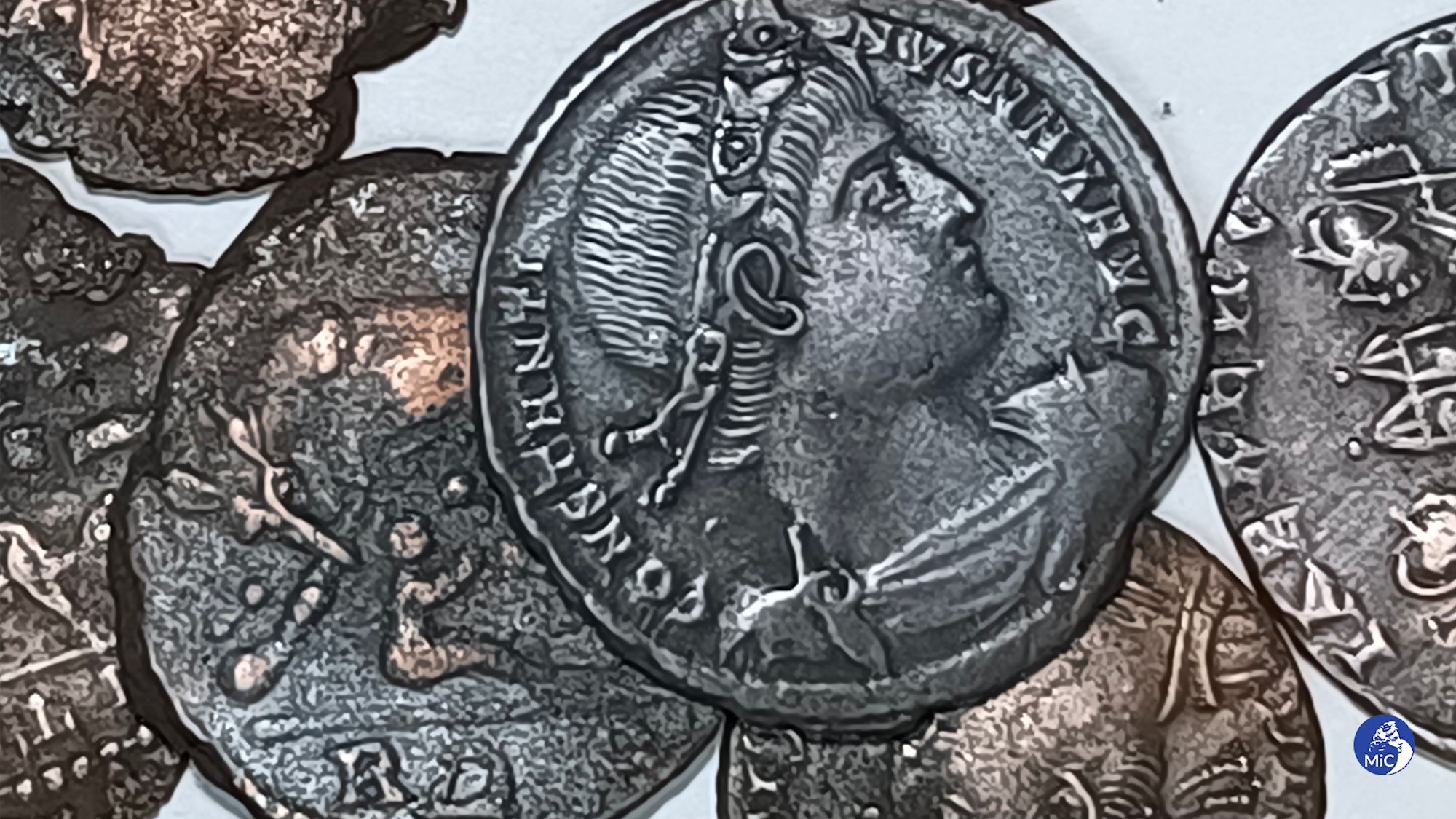

A tiny glimmer spotted amid seagrass by a diver off the Italian coast has yielded one of the largest historical treasure troves in over a decade. According to a November 4 announcement by Italy’s culture ministry, an archeological recovery team has recovered somewhere between 30,000 and 50,000 near-pristine ancient coins from the Mediterranean Sea dating back to the fourth century Roman empire.
[Related: These ‘fake’ ancient Roman coins might actually be real.]
Authorities described the large, bronze coins (known as follis) found near the town of Arzachena “in an exceptional and rare state of conservation,” with only four appearing slightly damaged. Upon further inspection, experts determined the currency originated across the Roman empire between 324 and 340 CE—roughly during Constantine the Great’s reign—with nearly every active mint known from the time, apart from Antioch, Alexandria, and Carthage.

Roman follis coinage entered circulation circa 294 CE during monetary reforms instituted by the emperor Diocletian. Even without a final official coin count, the Arzachena find is already confirmed to be larger than the last major follis discovery made a decade ago in the UK. In 2013, a local metal detector enthusiast uncovered 22,888 follis near Seaton Down a few hundred feet away from the site of a Roman military fort and villa circa the second-to-third centuries.
“The treasure found in the waters of Arzachena represents one of the most important discoveries of numismatic finds in recent years and highlights once again the richness and importance of the archaeological heritage that the depths of our seas… still guards and conserves,” Luigi La Rocca, regional director general of archaeology, fine arts and landscape, said via the Italian government’s recent announcement. La Rocca went on to describe such artifacts as “an extraordinary but also very fragile heritage” that is now constantly threatened by climate change and other human ecological impacts.
[Related: AI revealed the colorful first word of an ancient scroll torched by Mount Vesuvius.]
The tens of thousands of coins may not be the end of discoveries off the Sardianian coast, either. While recovering the follis, divers also found fragments of tall, two-handled, narrow neck jugs known as amphorae. Combined with the coins’ location across “two macro-areas of dispersion” in a large, sandy area between the beach and seabed, experts believe the region could hide the remains of a yet-to-be-uncovered shipwreck. Conservationists are now moving forward with follis restoration efforts.
